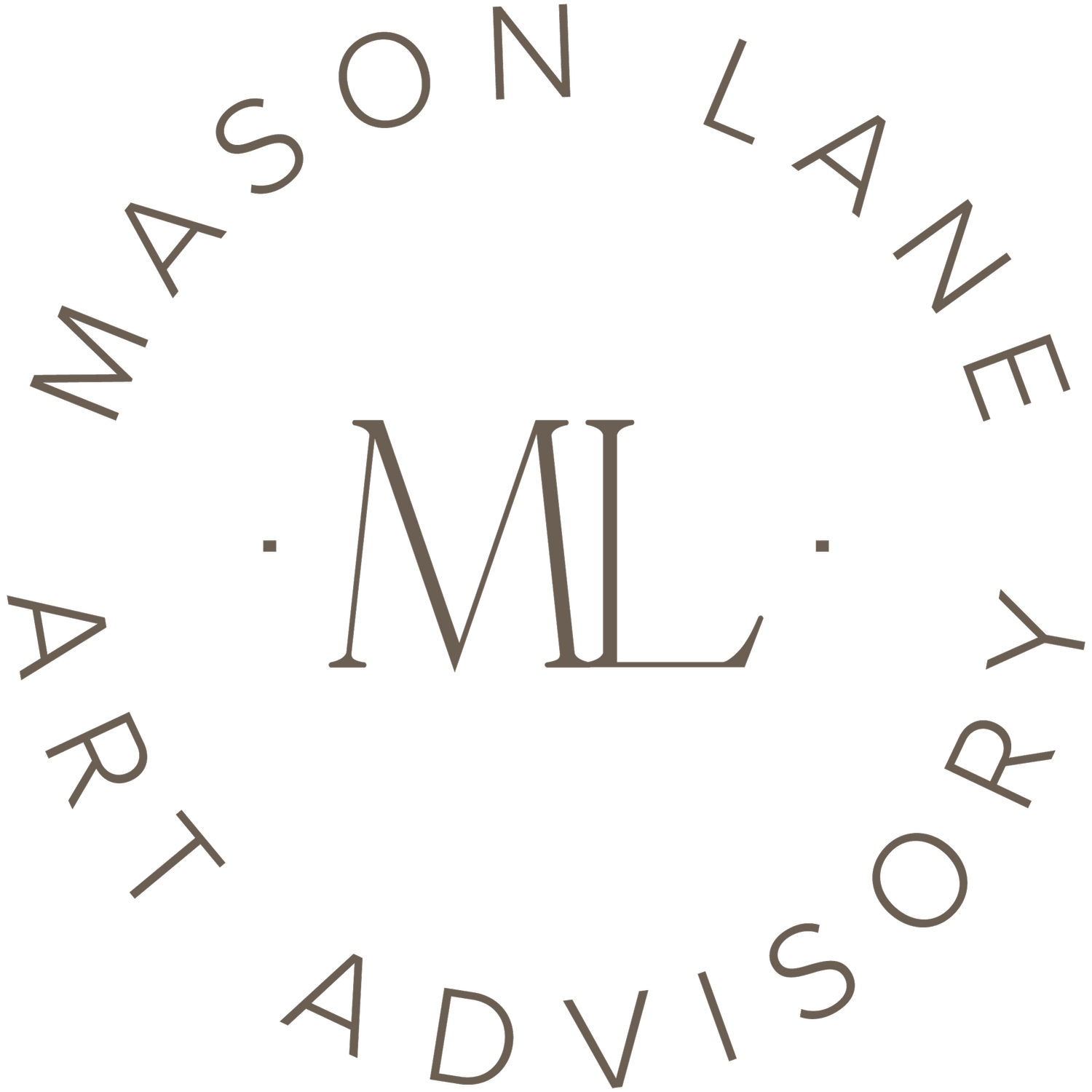For Designers Who Struggle With Motivating Clients To Buy Art
We’re grateful to work with interior designers from around North America. They often refer their clients to us, and the art sourcing and acquisition process is collaborative with incredible results. (Here’s a recent project done with Winter McDermott, and here’s a 30 second video listing other designers we’ve worked with.) Many designers also prefer handling art sourcing on their own, and for those designers, we share our recommended strategies because selling art is different from selling design. For years, we even led classes on this topic through Business of Home’s LAUNCH series. It was titled “The Secret to Sourcing & Selling Art” and included the major mistakes many designers make when trying to sell art, and how to avoid them. If you are that designer and could use some support, here are some tips:
Pierre Dorion painting in a Kim Lambert-designed living room, from our recent Forest Hill project in Toronto.
Create an art budget at the beginning of the project. Art and art sourcing should be a line item, like the other line items for a design project. Create a specific scope around this line item. For example, instead of listing “Art and Art Sourcing, $20,000”, get specific: “2 rounds of presentations focusing on 4 priority walls, plus one NYC gallery trip, $40,000. Art for those 4 walls will average $15,000 each for an estimated total of $60,000.” As with any well-defined scope, include language for work done out of scope, such as “anything beyond this will be done at a fee of $X per hour” or, what I prefer, “for any art sourcing done beyond this, we will draft an addendum with the extended scope, deliverables, and associated fees.”
Discuss art as you discuss design options with the client… not at the end of the design installation when everyone has decision and financial fatigue. During the design selection process, clients are primed to visualize how their space will look and make decisions. Plus, the art and design can inform each other, helping everyone together create a space with more depth and personality. Important, the best art does not match the throw pillows or take a complete left turn from the design concepts. We also discourage “filler art” or “showroom art” that simply fills a space and showcases the furniture. The best art elevates everything in the room - the design, the energy, and the character.
Learn and share the story behind the artworks that you recommend. People do not spend real money and buy art just because something looks pretty; they spend real money on art because they feel connected to it. The best synopses of art are concise, easy-to-understand (no art jargon), and relatable. Sharing an artist’s CV and exhibition history is nice, but it is not relatable, and we do not recommend leading with that when trying to sell art. Here is an example of a short write up on Sandi Haber Fifield that we recently created and shared with clients, alongside a Fifeld that we recommended:
Sandi Haber Fifield is a mixed media artist who employs juxtaposed images, collage, and drawing to explore the possibilities of the photographic image.
Haber Fifield views the artist as an architect of nature - a person who can observe their boundless surroundings then create new visuals, ideas, and experiences from the raw materials. Her process starts with a photograph, which is then cut into geometric forms that are layered together in a playful assortment intended to “transform the representation of the perceivable world.” Each composition incorporates recognizable forms alongside abstracted ones, and through layering and a altering of scale, there is an intriguing sense of depth within each work. Haber Fifiled intentionally creates this depth and curiosity to engage viewers’ eyes, minds and memory when viewing the work.
We have many more tips to share on the topic, but hope this is a good start. For further questions, don’t hesitate to reach out. Of course, we’re also here to handle your art sourcing needs and would love to chat about how that process works.

